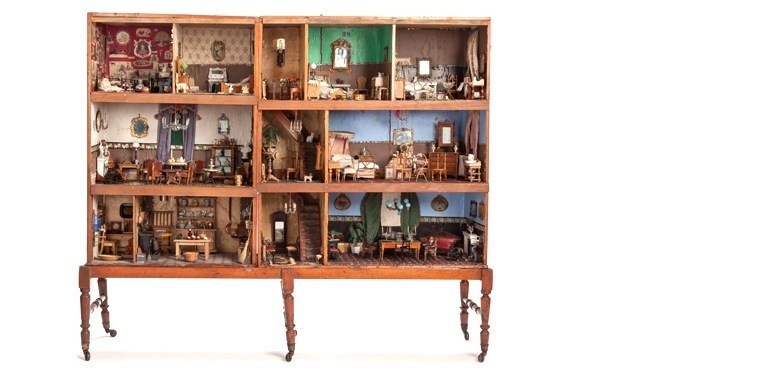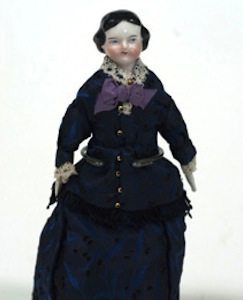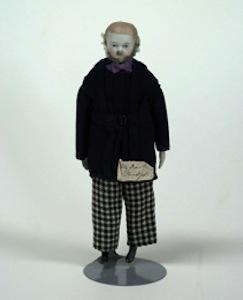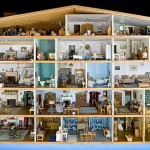Annie Horatia Jones Dolls House
The Annie Horatia Jones dolls house collection is special because of the centerpiece: a group of ten dolls made to resemble family members, created to keep the memories of her family close. They were dressed by her Aunt Tamazine Billings whose original hand-written labels are still sewn onto their clothing to identify the family member they are intended to represent.
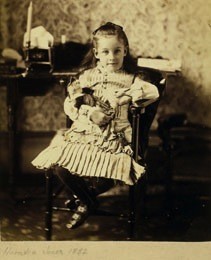
Photo of Annie Horatia Jones, 1882
Annie Horatia Jones was born on 29 August 1876 in Marylebone, London. Her father was Sir Horace Jones, architect and surveyor to the City of London. Sir Horace was the architect who designed many of London’s key structures, such as Tower Bridge.
The dolls were part of larger collection found in her cabinet dolls’ house which includes a photograph album depicting the family members represented by the dolls. This enables visitors to the Archives to see this influential Londoner in a personal context. The dolls and related letters and photographs provide a rich resource for students of Victorian family life.
Part of this stately cabinet-style dollhouse originally belonged to Annie’s mother, Lady Ann Jones. When it was Annie’s turn to learn adult roles through play, an
additional wing and wheeled base were added to the dollhouse (see the line between old and new to the left of the center of the house). Annie Horatia added her own personal touches.
The different heights of the dolls demonstrate Victorian attitudes towards personal status within the family. For example, the importance of the Victorian father as head of the household is displayed by the doll representing Sir Horace Jones which is a full two inches taller than the other dolls. The clothing on the dolls is also useful for looking at costume and dress during the late 19th century.
After her mother’s death in 1888, Annie Horatia was brought up by her Aunt Tamazine (Tammy) and Uncle Sidney Billings. The dolls kept the memories of her family alive for the rest of her life. She died in Surrey on March 27, 1969.
The collection was sold at auction to Magdalena Byfield who later published a book containing an article on the dolls (Magdalena Byfield, Dolls’ House Dolls 1850-1900 Living Dolls Limited, 1977, CLA/084/01/012). Byfield calls the dolls a ‘rare species’ because of the documentation which accompanied them. She also felt very strongly that the dolls should not be separated from the accompanying items.
The Annie Horatia Jones Collection is now part of the London Metropolitan Archives.
Susan Downing, with Patrick Owens
_____________________________________________________________________________________
I invite you to visit my Etsy Shop where I offer many accessories and pieces of furniture in 1:12 scale. Subscribers to this blog receive a discount on all Featured Products. Click here for details.


